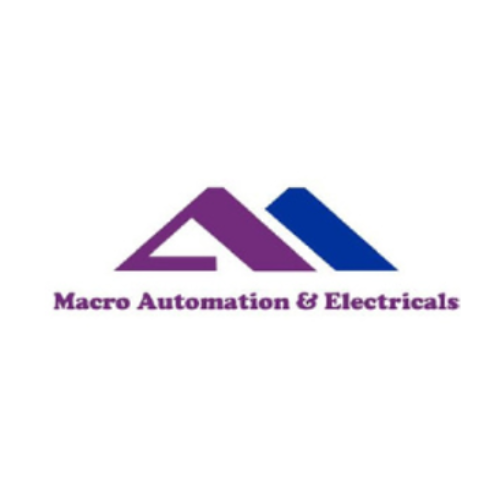- +91 9886004169
- info@unisolcommunications.com


Biometric access control systems revolutionize physical security. They rely on unique human traits—like fingerprints, facial features, fingerprints, iris patterns, or palm veins—to verify identity and grant access. This ensures a higher level of protection compared to traditional methods such as PINs, keycards, or fobs, which can be shared, lost, or stolen.
A key advantage of biometric systems lies in the inherent uniqueness of each individual’s biological traits. Fingerprints capture the unique patterns of ridges and valleys, making them nearly impossible to duplicate. Facial recognition systems use advanced algorithms to analyze facial geometry, including the distance between eyes, contours, and bone structure. Iris recognition targets the intricate patterns in the colored part of your eye, while palm vein scanning employs infrared technology to read vein patterns beneath the skin—an extremely secure form of authentication as it requires blood flow.
These methods make biometric access control systems virtually foolproof. By replacing cards or PINs with contactless or one-touch access, they dramatically reduce unauthorized entry and identity theft. This makes them ideal for areas containing sensitive data, valuable assets, or vulnerable individuals.
Modern biometric systems consist of several essential components. Biometric readers—touch or contactless—capture the trait and turn it into digital templates. Data controllers process these templates and compare them against permissioned databases. User management software administers enrollment, access profiles, time-based permissions, and audit logs. Together, this ecosystem ensures secure, granular, and scalable access control.
Scalability is a major strength. Whether you need a few units for a small office or hundreds of readers for a campus or data center, biometric access control systems can grow with your needs. Devices can be centrally managed via cloud platforms or local servers. Administrators can group users, assign role-based access, and even set temporary permissions—helpful for contractors or visitors.
Biometric readers also integrate seamlessly with complementary technologies. Multi-factor authentication can combine biometrics with smartcards, PINs, or mobile apps for elevated security. In such setups, employees may scan both their fingerprint and present a card, or use facial recognition plus a mobile pass. This layered approach ensures stronger protection for high-risk areas and meets strict security standards.
In high-traffic environments, contactless authentication makes operations smoother. Employees simply flash their face or scan a fingerprint and walk right through—no card swiping or PIN input. This blend of speed and efficiency improves user experience while maintaining tight security.
Integration with attendance and HR systems is another benefit. When biometric readers are linked to time-tracking software, they eliminate buddy punching—where coworkers clock each other in. This ensures accurate pay and personnel data, and enhances compliance.
Integrating biometric access control systems with CCTV, intrusion alarms, and visitor management platforms creates a unified security network. Alarms can trigger video recording, dwell time monitoring, or security alerts. Managers can quickly verify a person’s identity using both biometric logs and camera footage—vital for post-incident review or busy security teams.
Privacy and data security are carefully addressed. Templates generated from biometric traits are encrypted, anonymized, and stored securely. Raw images are never kept, minimizing misuse risk or data breach liability. Many systems also comply with data protection regulations like GDPR.
Certain markets—healthcare and education—benefit from contactless biometric access control systems for hygiene. Staff and students can enter labs or dormitories with just a glance or card-free fingerprint scan. These systems reduce surface contact during operations and are ideal for pandemic-era environments.
The speed of modern systems is impressive. Facial recognition can authorize users in less than a second, while advanced palm- or vein-based scanners can process templates nearly instantly. Even in peak traffic conditions, employee throughput remains smooth and fast.
Typical deployments include corporate offices, government facilities, data centers, banks, labs, residential compounds, and educational campuses. In high-security environments—like research facilities or legislative buildings—multi-modal systems combining face, fingerprint, and card ensure elevated authentication rigor.
Mobile and cloud-based management tools offer remote access to system administrators. Administrators can add users, revoke permissions, or review access logs remotely, ensuring seamless control across multiple branches or buildings.
At Unisol, we design and install custom biometric access control systems that fit your unique requirements. We begin with a security assessment to determine high-risk zones, anticipated traffic volume, peak periods, and hierarchical permissions. We then recommend compatible readers—options include fingerprint, face, palm vein, and iris scanners—based on factors like hygiene and performance needs.
Our technicians integrate the selected hardware into your existing infrastructure, ensuring compatibility with existing doors, turnstiles, or electronic locks. We phrase everything in a unified management system, so administrators control rights, monitoring, and reporting from a single dashboard.
Training is part of our deliverable. We walk employees and security teams through enrollment, access procedures, and exception handling. We teach IT staff how to manage users, track entries, generate attendance reports, and respond to alarms or breaches. We also conduct periodic reviews and tune-ups to ensure optimal performance and compliance.
Maintenance and support are essential. Hardware is periodically checked for lens clarity, firmware updates, and calibration. Monitoring software alerts administrators to low battery levels, template corruption, or unauthorized access attempts. In the event of a system issue, our support team responds quickly to diagnose and repair components.
Scalability remains possible: expanding your system is easy—additional readers or biometric channels can be integrated over Ethernet or PoE networks. We ensure that your system will be future-ready as technology advances.
Consider a real-world example: A secure enterprise deployed a biometric & access control system using palm vein scanners at perimeter access and fingerprint readers at internal offices. The results? Unauthorized tailgating dropped by 85%, access accuracy improved to over 99%, and attendance accuracy rose by 18%. The HR team also cut down payroll fraud by 20%.
Another case: a university installed face-based biometric readers in dormitories and labs. Students authenticate simply by looking at the kiosk. Access logs are automatically forwarded to the campus security console; during after-hours, any unverified entry attempt triggers an alarm and alerts security staff—preventing unauthorized research access.
Our service models include 24/7 remote monitoring options. We can configure alerts to Latin, SMS, or email for suspicious access attempts, unauthorized access, or system failure. This proactive offering helps clients minimize security gaps before escalation.
Biometric access control systems are evolving rapidly. Facial recognition is getting smarter—adjusting to lighting conditions, masks, aging faces. Palm vein scanners are gaining speed and lens clarity. Iris-based solutions are now compact and slide-free. Integration with multi-modal mobile credentials (like digital badges) ensures contactless convenience.
Choosing biometric access control systems means committing to future-ready and efficient security. They eliminate shared credentials, reduce unauthorized access, and simplify day-to-day throughput. The investment is paid back through improved compliance, reduced fraud, enhanced security, and workforce productivity.
At Unisol, we stand by every installation. We ensure compliance with local and international regulations, including NFPA, ISO, and GDPR. We keep biometric systems up-to-date with patches and new features as technology progresses. We partner with clients to maintain high-security integrity over the long term.
If you’re ready to enhance access control with reliable, hygienic, and scalable biometric technology, contact Unisol for a comprehensive solution. We offer tailored designs, detailed assessments, and professional support to ensure your transition to biometric authentication is seamless, secure, and future-ready.
+91 98860 04169
+91 98440 65605
info@unisolcommunications.com































Manufacturing Initiatives


Copyright © 2025 | Unisol Communications Pvt Ltd. | All rights reserved.